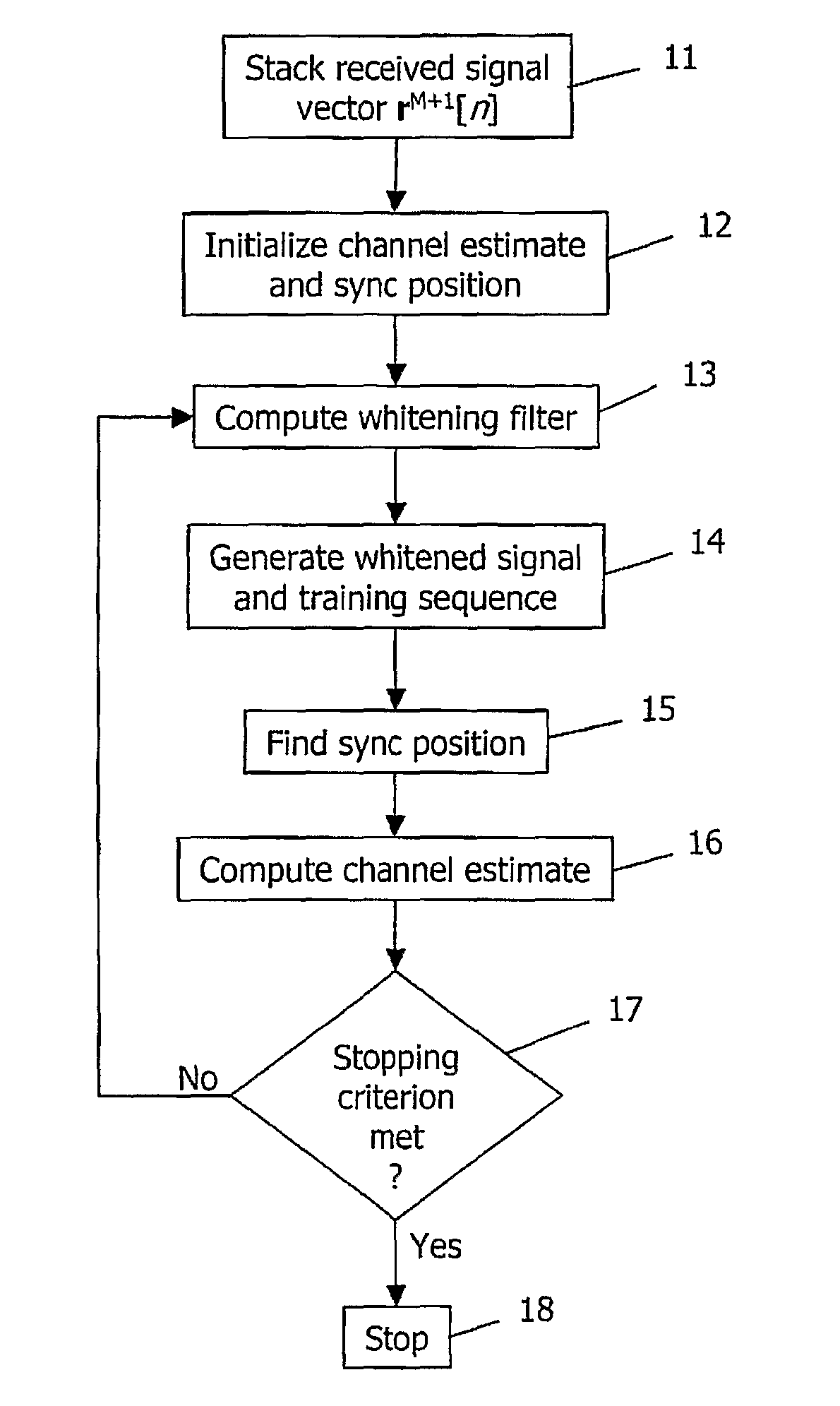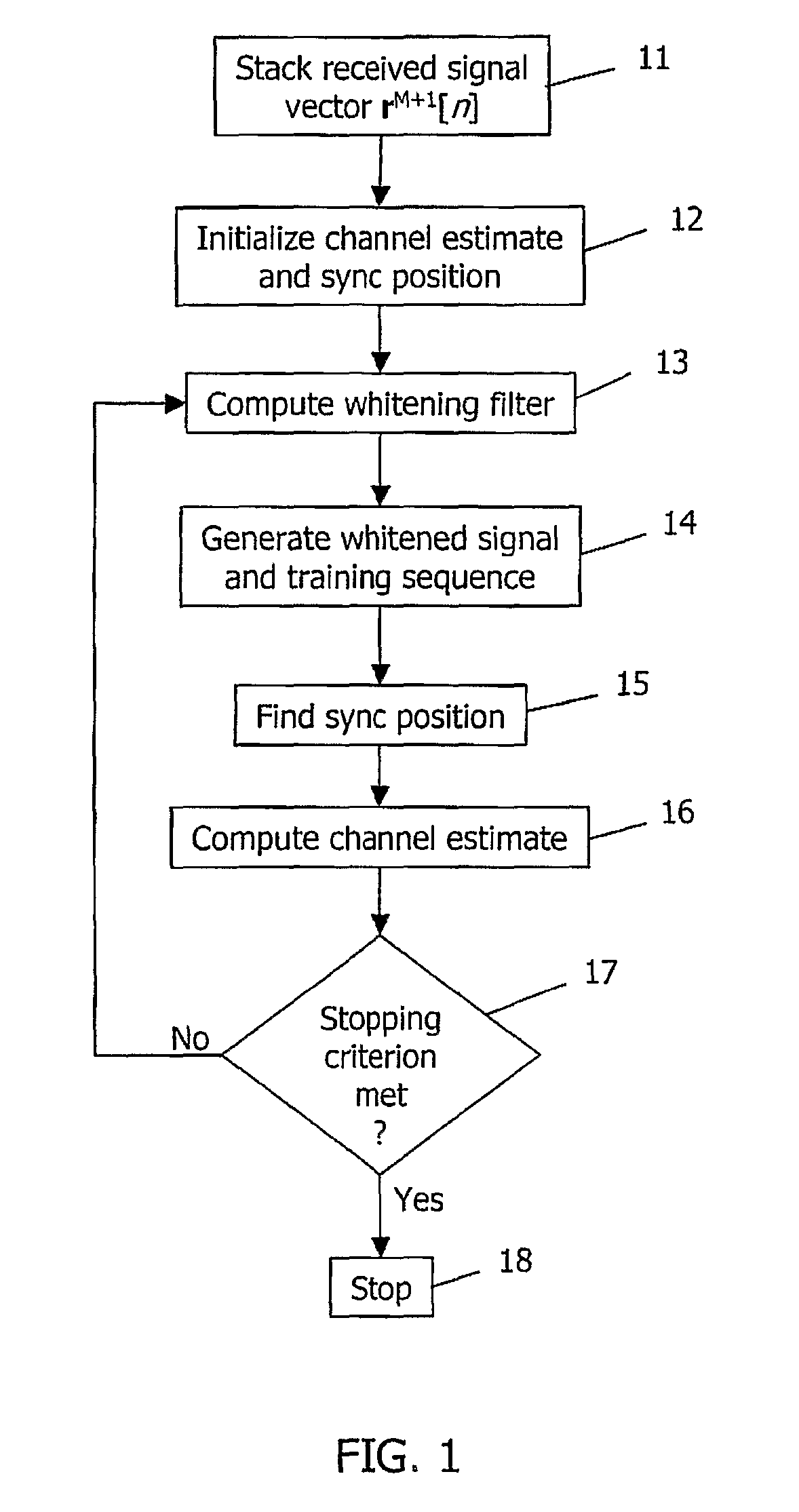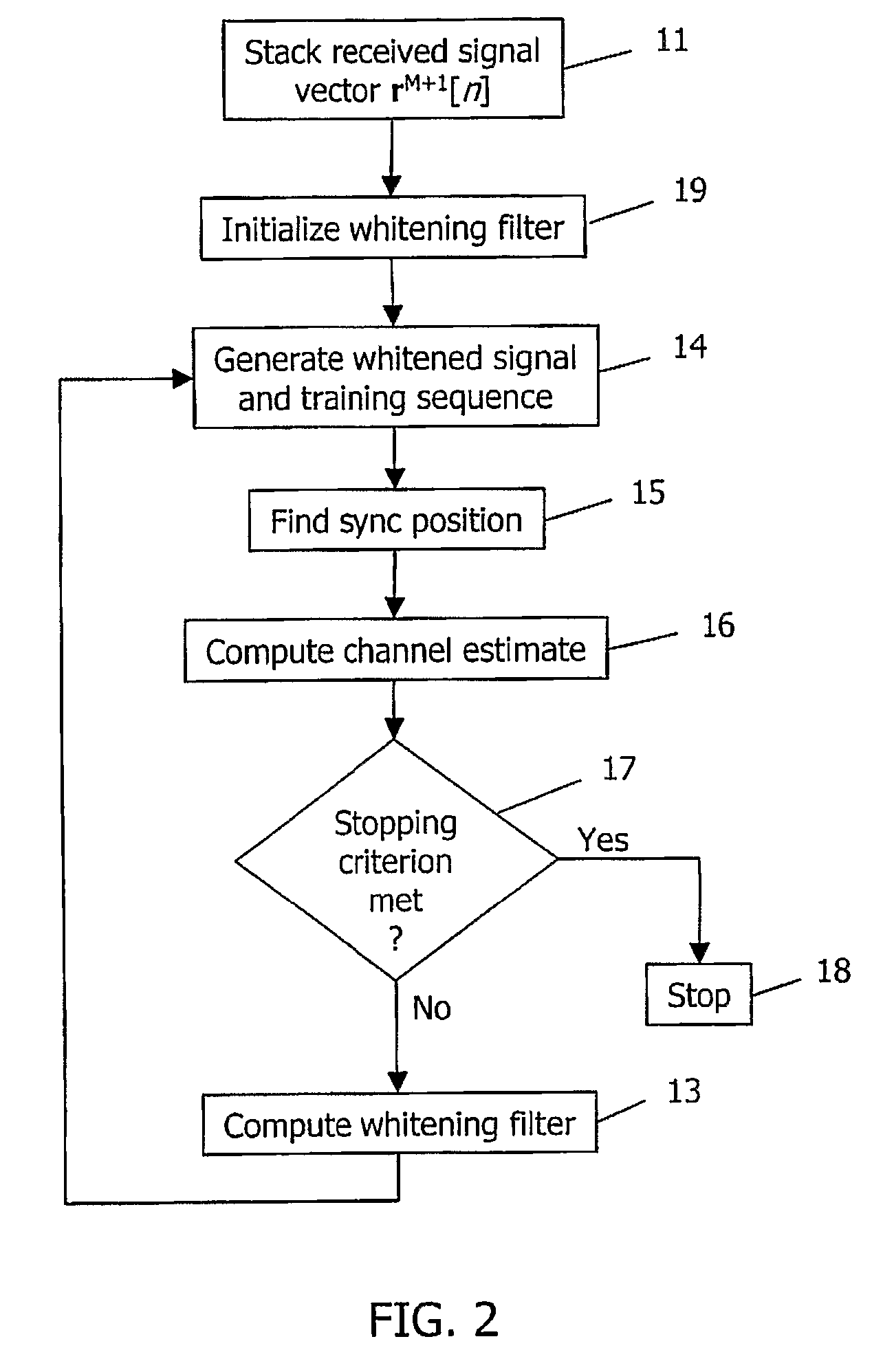Method and device for synchronization and channel estimation in a radio receiver
a radio receiver and channel estimation technology, applied in the field of radio telecommunication systems, can solve the problems of no longer producing an accurate synchronization position or channel estimation, and the effect of affecting the synchronization position and channel estimation of the receiver
- Summary
- Abstract
- Description
- Claims
- Application Information
AI Technical Summary
Benefits of technology
Problems solved by technology
Method used
Image
Examples
first embodiment
[0029]FIG. 1 is a flow chart of the method of the present invention in which the order of iteration F→n0→C is utilized. In this embodiment, the iteration starts with an initial estimate of C and n0, followed by a first computation of the whitening filter F. At step 11, a stacked received signal vector rM+1[n] is generated. At step 12, the channel estimate C and the synchronization position n0 are initialized. At step 13, the whitening filter {circumflex over (F)} is computed in a first iteration based on the fixed values of the channel estimate C and the synchronization position n0. In the preferred embodiment, the whitening filter estimate {circumflex over (F)} is computed as the “square root” of the inverse of the matrix:
Λ^≡∑n=L+M-1N-1(rM+1[n+n^0]-T(C^)sL+M[n])(rM+1[n+n^0]-T(C^)sL+M[n])H(1)
such that {circumflex over (F)}H{circumflex over (F)}={circumflex over (Λ)}−1, where:
T(C)≡[C[0]C[1]…C[L-1]0…00C[0]C[1]…C[L-1]0⋮⋮⋮⋮⋮⋮⋮⋮⋮0C[0]C[1]…C[L-1]00…0C[0]C[1]…C[L-1]](2)
is an (M+1)×(L+M) bl...
second embodiment
[0037]FIG. 2 is a flow chart of the method of the present invention in which the order of iteration F→n0→C is utilized. Similar steps are numbered the same in all figures. In this embodiment, the iteration starts with an initial estimate of the whitening filter F, followed by a first computation of the synchronization position n0 and the channel estimate C. At step 11, a stacked received signal vector rM+1[n] is generated. At step 19, the whitening filter is initialized. At step 14, a whitened received signal ŷ[n] and whitened training symbol {circumflex over (t)}[n] are generated using the procedures described above. At step 15, the synchronization position n0 is found based on the whitened signal ŷ[n] and whitened training symbol {circumflex over (t)}[n]. At step 16, the channel estimate Ĉ is computed for the found synchronization position {circumflex over (n)}0 based on the whitened signal ŷ[n] and whitened training sequence {circumflex over (t)}[n].
[0038]At step 17, it is determ...
third embodiment
[0039]FIG. 3 is a flow chart of the method of the present invention in which the order of iteration F→n0→C is utilized. Again, similar steps are numbered the same in all figures. In this embodiment, the iteration starts with an initial estimate of C and n0, followed by a first computation of the whitening filter F. At step 11, a stacked received signal vector rM+1[n] is generated. At step 12, the channel estimate C and the synchronization position n0 are initialized. At step 13, the whitening filter {circumflex over (F)} is computed in a first iteration based on the fixed values of the channel estimate C and the synchronization position n0.
[0040]At step 17, it is determined whether a predefined stopping criterion has been met. Once again, the stopping criterion may be based on a predefined fixed number of iterations, or a determination that the percentage change in a quantity, such as the channel estimation error, E(Ĉ,{circumflex over (Λ)},{circumflex over (n)}0), or the log likelih...
PUM
 Login to View More
Login to View More Abstract
Description
Claims
Application Information
 Login to View More
Login to View More - R&D
- Intellectual Property
- Life Sciences
- Materials
- Tech Scout
- Unparalleled Data Quality
- Higher Quality Content
- 60% Fewer Hallucinations
Browse by: Latest US Patents, China's latest patents, Technical Efficacy Thesaurus, Application Domain, Technology Topic, Popular Technical Reports.
© 2025 PatSnap. All rights reserved.Legal|Privacy policy|Modern Slavery Act Transparency Statement|Sitemap|About US| Contact US: help@patsnap.com



